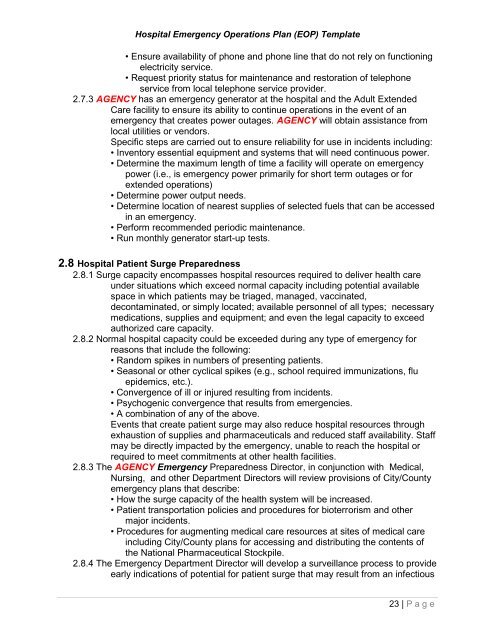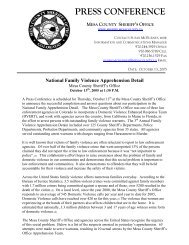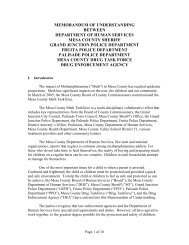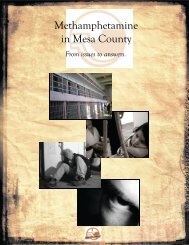Hospital Emergency Operations Plan (EOP) TEMPLATE
Hospital Emergency Operations Plan (EOP) TEMPLATE
Hospital Emergency Operations Plan (EOP) TEMPLATE
You also want an ePaper? Increase the reach of your titles
YUMPU automatically turns print PDFs into web optimized ePapers that Google loves.
<strong>Hospital</strong> <strong>Emergency</strong> <strong>Operations</strong> <strong>Plan</strong> (<strong>EOP</strong>) Template<br />
• Ensure availability of phone and phone line that do not rely on functioning<br />
electricity service.<br />
• Request priority status for maintenance and restoration of telephone<br />
service from local telephone service provider.<br />
2.7.3 AGENCY has an emergency generator at the hospital and the Adult Extended<br />
Care facility to ensure its ability to continue operations in the event of an<br />
emergency that creates power outages. AGENCY will obtain assistance from<br />
local utilities or vendors.<br />
Specific steps are carried out to ensure reliability for use in incidents including:<br />
• Inventory essential equipment and systems that will need continuous power.<br />
• Determine the maximum length of time a facility will operate on emergency<br />
power (i.e., is emergency power primarily for short term outages or for<br />
extended operations)<br />
• Determine power output needs.<br />
• Determine location of nearest supplies of selected fuels that can be accessed<br />
in an emergency.<br />
• Perform recommended periodic maintenance.<br />
• Run monthly generator start-up tests.<br />
2.8 <strong>Hospital</strong> Patient Surge Preparedness<br />
2.8.1 Surge capacity encompasses hospital resources required to deliver health care<br />
under situations which exceed normal capacity including potential available<br />
space in which patients may be triaged, managed, vaccinated,<br />
decontaminated, or simply located; available personnel of all types; necessary<br />
medications, supplies and equipment; and even the legal capacity to exceed<br />
authorized care capacity.<br />
2.8.2 Normal hospital capacity could be exceeded during any type of emergency for<br />
reasons that include the following:<br />
• Random spikes in numbers of presenting patients.<br />
• Seasonal or other cyclical spikes (e.g., school required immunizations, flu<br />
epidemics, etc.).<br />
• Convergence of ill or injured resulting from incidents.<br />
• Psychogenic convergence that results from emergencies.<br />
• A combination of any of the above.<br />
Events that create patient surge may also reduce hospital resources through<br />
exhaustion of supplies and pharmaceuticals and reduced staff availability. Staff<br />
may be directly impacted by the emergency, unable to reach the hospital or<br />
required to meet commitments at other health facilities.<br />
2.8.3 The AGENCY <strong>Emergency</strong> Preparedness Director, in conjunction with Medical,<br />
Nursing, and other Department Directors will review provisions of City/County<br />
emergency plans that describe:<br />
• How the surge capacity of the health system will be increased.<br />
• Patient transportation policies and procedures for bioterrorism and other<br />
major incidents.<br />
• Procedures for augmenting medical care resources at sites of medical care<br />
including City/County plans for accessing and distributing the contents of<br />
the National Pharmaceutical Stockpile.<br />
2.8.4 The <strong>Emergency</strong> Department Director will develop a surveillance process to provide<br />
early indications of potential for patient surge that may result from an infectious<br />
23 | P a g e













